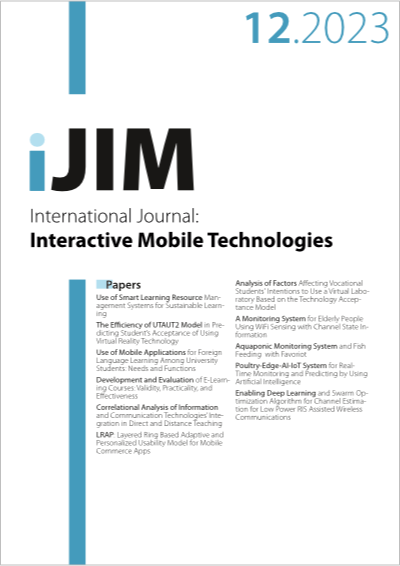Use of Smart Learning Resource Management Systems for Sustainable Learning
DOI:
https://doi.org/10.3991/ijim.v17i12.39205Keywords:
online learning,, open educational resources, search engine, life long learning, sustainable learningAbstract
Learning resources are very important to all the stakeholders in the world of education. There is a very large number of learning resources today and they are scattered all over the internet. This study was about the development of a new smart learning resource management system called STOU SmartLearnX, which can locate and pull up digital content from the internet and social media. It has integrated technology to support independent learning via digital media. The system passed quality control evaluation by a panel of 15 experts before being tested on bachelor’s degree students enrolled in an online course emphasizing nanolearning style offered by an open university in Thailand. The 65 sample students testing the system came from Humanities and social science, Science and technology and Health science. They were given a pretest before using STOU SmartLearnX in the course and a posttest after using it, and their mean scores were compared using t-test dependent and one-way ANOVA. Mean posttest scores were higher than pretest scores to a statistically significant degree, but there was no significant difference in posttest scores between the students from the group, indicating that the system can be successfully used for learning in different subject areas. In the future the system may be further developed to make it able to deliver more precise results by utilizing advanced searches and images. Searches should take into account the context and should be responsive.
Downloads
Published
How to Cite
Issue
Section
License
Copyright (c) 2023 kemmanat Mingsiritham, Gan Chanyawudhiwan

This work is licensed under a Creative Commons Attribution 4.0 International License.


